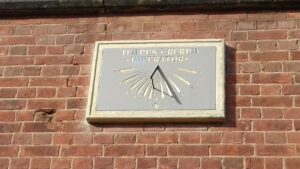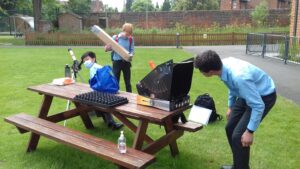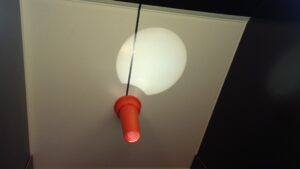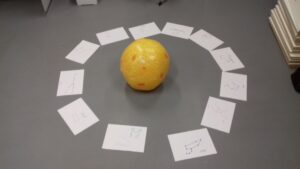The Edexcel Specification:
Doing the course as an additional subject – some advice:
GCSE Astronomy Briefing slide presentation
This is a suggested plan for guided self study of the Edexcel specification points covered in Paper 1 Naked-eye Astronomy
Paper 1 Naked-eye Astronomy Edexcel GCSE Astronomy Learning Plan
This is a suggested plan for guided self study of the Edexcel specification points covered in Paper 2 Telescopic Astronomy
Paper 2 Telescopic Astronomy Edexcel GCSE Astronomy Learning Plan
Edexcel GCSE Astronomy Formulae and Data Sheet:
Edexcel Astronomy Formulae and Data Sheet
Royal Greenwich Observatory GCSE Astronomy Resources:
https://www.rmg.co.uk/schools-communities/teacher-resources/gcse-astronomy-resources
Mickledore Publishing textbook and other resources for sale:

A lovely image of the half moon by one of the John Mason School GCSE Astronomy pupils
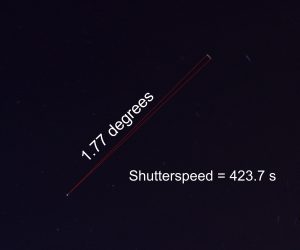
Analysis of a star trail photograph to calculate the length of a sidereal day
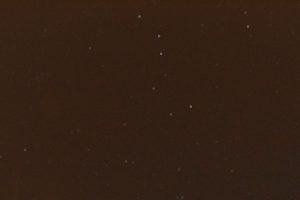
Photograph of Ursa Minor by a John Mason School student
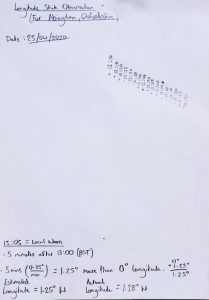
Determination of the longitude of Abingdon to within 0.03° by a John Mason School student
- Criteria for GCSE Astronomy Observing Task
- Allowed observational tasks
- Observation Planning Pro-forma GCSE Astronomy
- Unaided Observation Form
- Analysis and Evaluation Proforma GCSE Astronomy
- Handy link – Light Pollution/Bortle Scale: https://astrobackyard.com/the-
bortle-scale/ - Some examples of simple astrophotography:
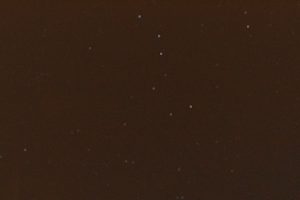
Ursa Minor by Henry, John Mason School
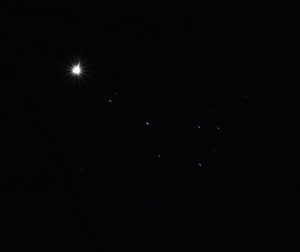
Venus and The Pleiades
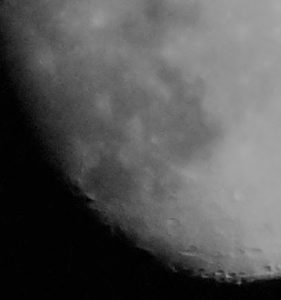
The Moon’s Terminator
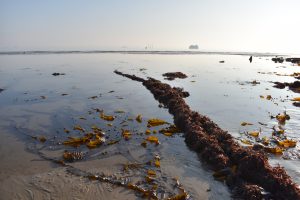
Very low spring tides during the early April Supermoon in 2020
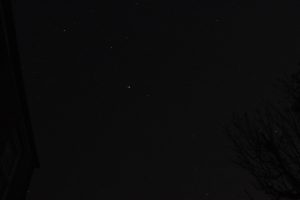
Arcturus in Bootes
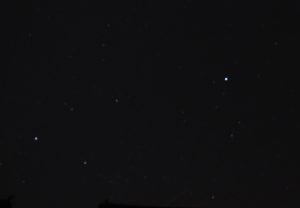
Vega, Lyra, Deneb and part of Cygnus
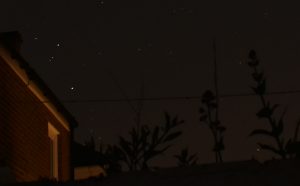
Scorpio emerging from behind the rooftops
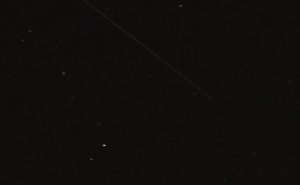
A satellite travelling above the constellation of Ophiucus
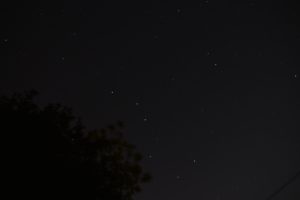
Ursa Major and Ursa Minor with Draco between them
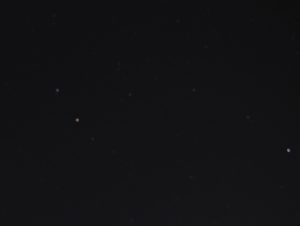
Ursa Minor showing the red star Kochab and blue Pherkad sometimes known as ‘Keepers of the Pole’ as they circle Polaris to the right,
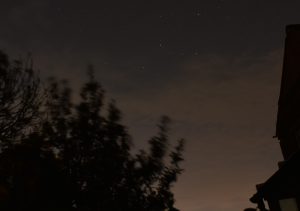
Cassiopeia and nacreous clouds above Portsmouth.
A4 Estimate a Celestial Property Using Drawings
A9 Longitude from a Shadow Stick
A10 Assess the accuracy of a sundial
Some example work by GCSE Astronomy students:
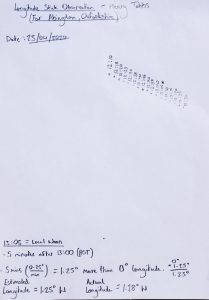
Determination of the longitude of Abingdon using the shadow stick method by Henry, John Mason School
B11 Demonstrate the range of objects in the Messier Catalogue
A short video explaining how to request observations from the National Schools Observatory’s robotic Liverpool Telescope:
- Planet Earth Presentation
- Planet Earth Questions
- Model answers: https://youtu.be/OrLN6ljVmEU
- Earth structure
- A great video on the interior of the Earth from BBC https://www.bbc.co.uk/ideas/videos/three-minutes-to-the-centre-of-the-earth/p0fwz6l4
- An interesting article on Earth’s formation and the likely source of water https://phys.org/news/2023-07-earth-dry-rocky-blocks.html
Why is the sky blue?
- The Lunar Disc
- Lunar Landmarks – Test yourself exercise Lunar Landmarks
- Lunar Information Booklet
- The Moon Questions
- Model answers: https://youtu.be/idHFe95_G7Y
- The Earth-Moon-Sun System Presentation (Part 1 Topics 3.1-3.4)
- The Earth-Moon-Sun System Presentation (Part 2 Topics 3.5-3.10)
- Presentation Part 1 – The Equation of Time Time and the Earth Moon Sun System (1)
- Equation of time example questions from Edexcel eotime.docx
- Mark scheme and model answers eotime EOT model answers
- Presentation Part 2 – Determination of Longitude Time and the Earth Moon Sun System (2)
- Example questions from Edexcel earth-moon-sun-cycles
- Mark scheme and examiner’s report earth-moon-sun-cycles earth-moon-sun-cycles (1)
There are some really clear ‘analemma’ images at this link, showing the apparent path of the Sun through the sky from a point on Earth over the course of a year. This helps to explain why the shadow made by a sundial needs the EOT correction:
The Equation of Time – a real example.
Here is a photo of a sundial at Abingdon School taken at 15:23BST on 11 October 2021:
The shadow shows the time as approximately 2:31 which is not the same as clock time.
Correction 1 – adjust for BST so 2:31+1 hr = 3:31
Correction 2 – the equation of time shows that for 11 October, which is Day 284 of the year, a sundial will be approximately 13 minutes fast. This means the clock should read 12 minutes earlier which is 3:18
Correction 3 – the longitude of Abingdon is 1.288 degrees west and the Earth takes 4 minutes to turn every 1 degree so 4 x 1.288 = 5.152 minutes. This must be added to the sundial time as it is a westerly longitude, giving the final, corrected time as approximately 3:23 compared to the actual clock time of 3:23.
Not bad!
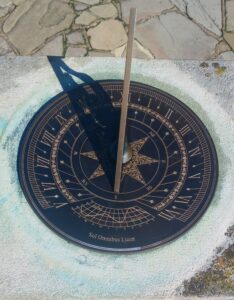
An example of a horizontal sundial at RHS Gardens, Wisley Surrey. The image was taken at 10:33 BST on 23 Sept 2023.
How accurate is the time given by the sundial? Not very accurate at first sight – the shadow is crossing the dial at approximately 9:43!
After corrections however, the result is a lot better.
Step 1 – convert the dial’s GMT reading of 9:43 to BST by adding one hour. Corrected time = 10:43
Step 2 – look at the lovely Equation of Time curve inscribed on the dial. For 23 September the dial reads FAST by about 8 minutes. Corrected time = 10:35
Step 3 – the longitude of RHS Wisley is 0.473 degrees west of Greenwich. It takes 4 minutes for Earth to rotate each degree so Wisley Mean Time will be 0.473 x 4 = 1.89 minutes LATER THAN Greenwich Mean Time. Final corrected time = 10:33 (rounding 1.89 minutes to approximately 2 minutes)
So this is a pretty well aligned and accurate sundial!
https://www.rhs.org.uk/gardens/wisley
Here is a worksheet with explanations and examples of the analemma pattern and how it relates to the EOT:
- Solar System Observation Presentation (Part 1 Topics 5.1-5.4)
- Safe observations of a partial solar eclipse:
In this image students are demonstrating ways of observing the Sun safely:
1.Right of image – using a commercially purchased solar projector (see the next image to see the projection)
2. Centre – using a home made pinhole projector, a long box with a pinhole punched in tinfoil at the ‘Sun’ end and white paper stuck inside the opposite end to make a screen. A viewing aperture has been cut in the top of the box nearest the screen. NOTE that the student is facing away from the Sun to avoid accidentally looking directly at it.
3. Left of image – using a specialised solar telescope with a Hydrogen-Alpha filter safe for direct observation of the Sun.
An image of the projection screen inside the commercially purchased solar projector during a partial solar eclipse in June 2021.
Modelling the zodiacal band – this site has a good diagram https://www.space.fm/astronomy//planetarysystems/ecliptic.html
- What is retrograde motion? Study this presentation and answer the questions it asks – you will also need to print out the ‘Retrograde Motion of Mars’ worksheet:
- Solar System Observation (2)Presentation (Part 2 Topics 5.5-5.8)
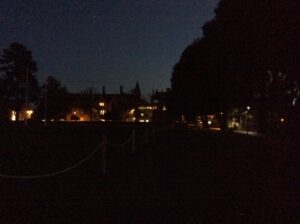
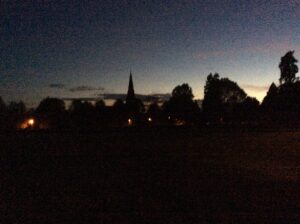
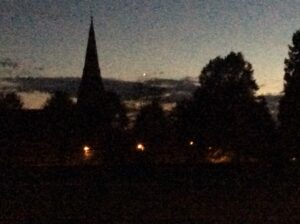
Jupiter and Venus over Abingdon School Tuesday 2 November 2021
- Topic 6 Part 1 Topic 6 Celestial Observations Part 1 – Naked Eye Objects
- Topic 6 Part 2 Topic 6 Celestial Observations Part 2 – Planning to observe
- Edexcel Topic 6 Guide ‘The Celestial Sphere’ GCSE_Astronomy_Topic_Guide_Celestial_Sphere
- Celestial sphere revision quiz Quick Quiz
- Past paper questions:
- Example questions set 1 from Edexcel celestial-observation-examples (2) (1)
- Mark scheme and examiner’s report (1) celestial-observation-examples (1) celestial-observation-examples
- Example questions set 2 from Edexcel celestial-observation-examples-2
- Mark scheme and examiner’s report celestial-observation-examples-2 celestial-observation-examples-2 (1)
Topic 8 Presentation 8.Planetary Motion and Gravity
Example Edexcel questions Topic 8
Mark scheme Topic 8
Model answers video https://youtu.be/87R–zHVbsY
Here are some suggested Solar Astronomy self-study exercises Topic 10 Solar Astronomy – Sunspots and Structure Exercises
NASA/SOHO Sunspot Tracking Exercise Sunspot Exercise
Print this off to carry out the sunspots exercise Sunspot Grid
If you are a registered user of the National Schools Observatory then you can access and carry out their Sunspots and Solar Cycles activity here https://www.schoolsobservatory.org/discover/activities/sunspots_workshop
- Topic 11 Exploring the Solar System Topic presentation 1
- Fantastic NASA tool for exploring asteroids https://eyes.nasa.gov/apps/asteroids/#/asteroids
- Topic 11 Exploring the Solar System (2) Astronomical measurement scales
- Topic 11 Exploring the Solar System (3) – Formation of the Solar System
- Topic 11 Exploring the Solar System (4) – Telescopes
- https://astronomy.tools/calculators/telescope_capabilities
- Topic 11 Exploring the Solar System (5) – Space Probes
- Solar System Space Probes – Self Study Project
- GCSE Astronomy – Space Probes notes
- The 7 Coolest Active Space Probes: https://www.youtube.com/watch?v=jiQpudokpzc
- A scale drawing of distances to all the objects in the solar system, GCSE Astronomy class January 2021
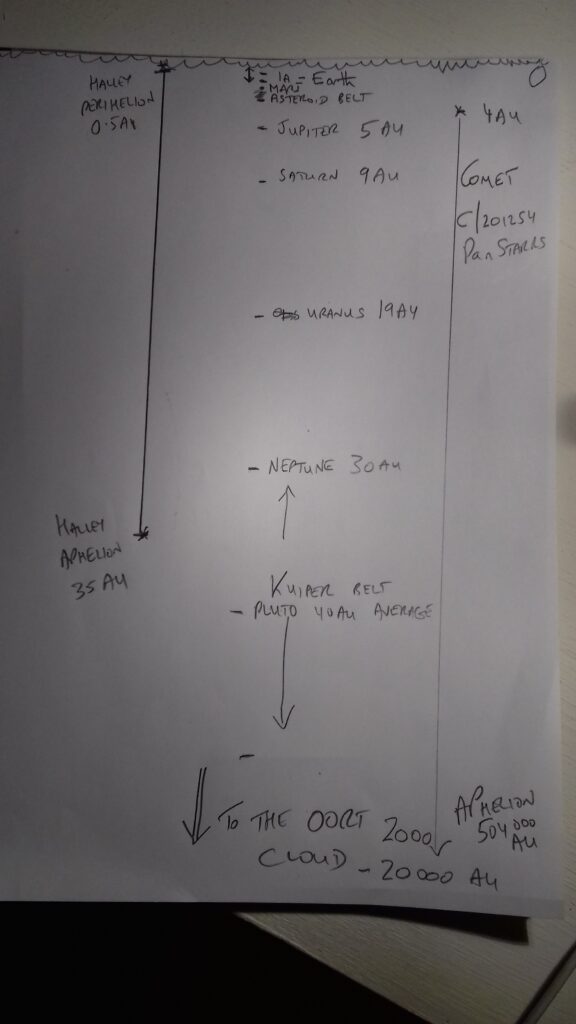
Topic 12 Formation of Planetary Systems
Tidal disruption and the Roche limit (NASA Goddard Space Flight Centre Resource)
https://solarsystem.nasa.gov/resources/754/what-is-a-lagrange-point/
Topic 13 Exploring Starlight Part 1 Magnitude, HR diagrams and distance
Topic 13 Exploring Starlight Part 2 Light curves, binary stars, Cepheid variables and clusters
Topic 13 Exploring Starlight Part 3.1 Observing in visible and radio wavelengths
Hubble Cast video on Spectroscopy
Topic 13.2 Exploring Starlight Part 3.2 Observing in other wavelengths
Written answers to NASA GSFC Inverse Squared Law Quiz questions in Part 1 (NASA Inverse Squared Law Quiz ):Inverse Square Law Solutions
Topic 14 Presentation – Topic 14 Stellar Evolution
Topic 15 Presentation Topic 15 Our place in the galaxy
Topic 16 Presentation Topic 16 Cosmology
- Stellarium: an excellent, free to download, planetarium package. It runs on various platforms and allows you to find your way around the night sky in real time, the past and the future. We hope to post some simple Stellarium tutorials before too long. (The app version may not be free of charge and other planetarium packages are available, but you can also use the web version without any download here Web version of Stellarium)
- National Schools’ Observatory: many online resources, simulations and access to real, astronomical imagery for many topics in the GCSE course.
I have recorded a presentation about the structure and assessment methods of the course which can be viewed online here:
This is a copy of the slides if you prefer to read them in your own time:



